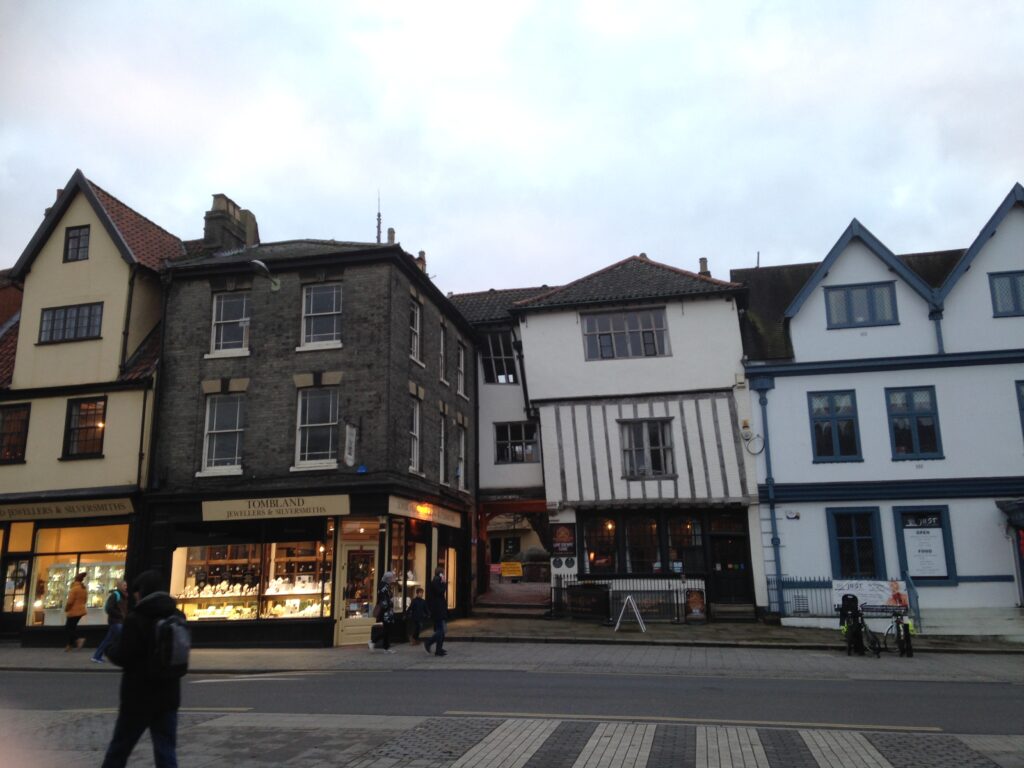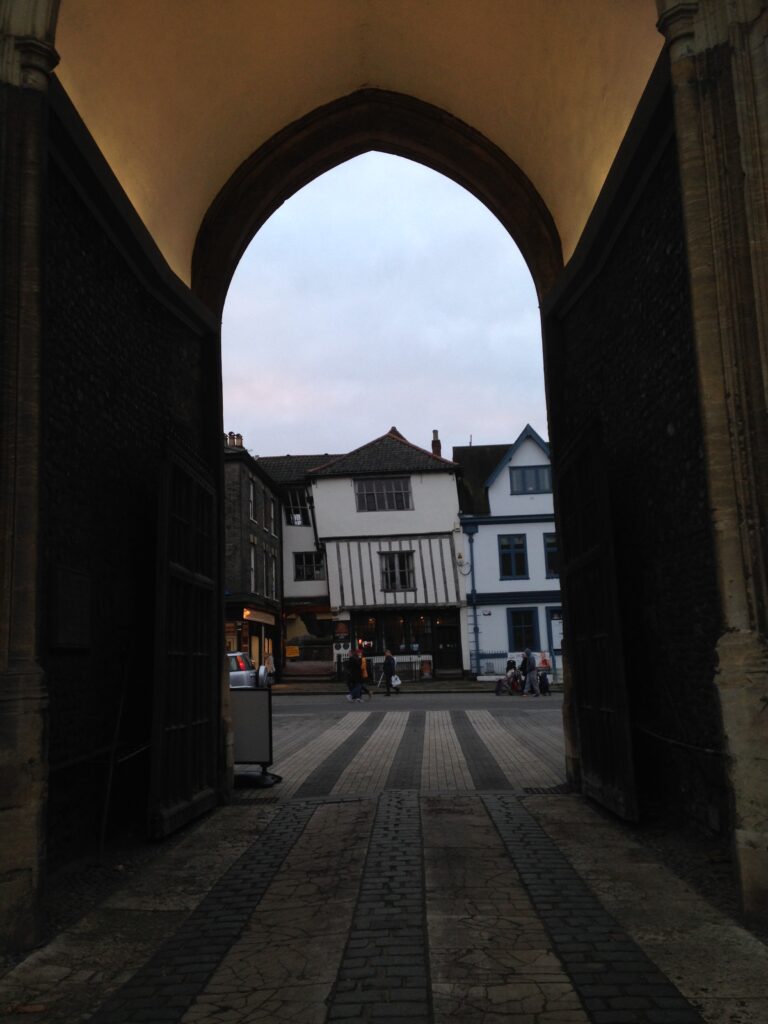Plague and Cannibalism at the Augustine Steward House, Norwich
Visitors to Norwich have likely stumbled upon the eccentric Augustine Steward House, a former sixteenth-century merchant’s home that deceptively appears on the brink of collapse. A timber-framed Grade II listed building, the Augustine Steward House oozes a haunted house aesthetic, nearly manifesting itself from a Gothic novel. Luckily for the eager ghost hunter, the house is indeed reported to be haunted. And it’s in good company with nearby Norwich Cathedral and the Maids Head Hotel having their own resident ghosts. But the ghost that supposedly haunts the Augustine Steward House comes with a gruesome and upsetting tale, making her lingering presence something to be pitied instead of feared.

© Curious Archive, 2020
About the Augustine Steward House
The house was built in c. 1549 for Augustine Steward, a wealthy merchant and three time mayor of the city. The house sits along the site of the old Saxon marketplace, directly across from Norwich Cathedral, and extends down the north side of Tombland Alley (‘Tombland’ surprisingly doesn’t refer to tombs or graves, but is from the late-Saxon word referring to an open space). The Augustine Steward House includes an attic and undercroft and is considered a typical example of a sixteenth-century merchant’s town house with the ground floor used as a shop and the upper floors as a residence. There is debate over the exact age of the house, with some arguing it’s original construction on a date earlier than 1549.
The house received an extensive renovation in 1900 and again in 1944 after suffering damage from a roof fire. Another restoration and stabilisation was conducted by the Norwich Preservation Trust between 1992 and 1995. Despite the twisted upper story timbers giving the house it’s crooked appearance, the building is in good condition and continues to be used today.
Plague, Cannibalism, and Reported Hauntings
Naturally, a building with an appearance as strange as the Augustine Steward House has a ghost story attached to it. Though the story itself has dubious origins, it’s morbidly fascinating nonetheless. As a small warning, you might want to skip this one if cannibalism makes you squeamish.

© Curious Archive, 2020
The first part of the story is entirely true: In August of 1578, Queen Elizabeth I along with an entourage of 2000 visited Norwich. The city went through an immense effort to prepare for the Queen’s visit including theatre, dancing, and speeches galore, extensive redecoration of the Bishop’s Palace where she slept, and an initial welcome party consisting of 60 of Norwich’s best looking men dressed in black satin (and also the removal of heads and bodies of criminals from the city walls… can’t have that). Once the Queen and her entourage left Norwich, a devastating plague began to spread through the city, killing at least 4800 citizens. Some believe the correlation between the events is more than a coincidence. Plague pits from previous outbreaks were reopened to dispose of the increasing number of corpses. And city officials made the cruel decision to bolt up the houses that were deemed infected, locking their inhabitants inside to fight for their lives as they succumb to disease. Norwich rapidly went from a city of royal celebration to a city of death and suffering.
The second part of the story is based on local legend, but is certainly something that could have happened. It also makes a somewhat entertaining (though horrible, if true) twist to your typical haunted house tale. During the 1578 plague, a family was living inside the Augustine Steward House. The parents were among those infected with the disease and the family was boarded up inside their home. The parents eventually died, leaving their daughter to fend for herself. A short time later she ran out of food and, in desperation to stay alive, began to eat her parents. After some time the authorities reopened the home to check for survivors and found the daughter dead beside the bodies of her parents with her teeth marks visible in their flesh. Since then, there have been reports of a young woman haunting the streets of Tombland immediately surrounding the Augustine Steward House.
This is one version of the story. There are quite a few scattered around the internet, some with interesting discrepancies:
- Some retellings include the cannibalism portion of the narrative while others don’t make any mention of it
- Some specifically refer to the Augustine Steward House while others vaguely refer to a house in the general Tombland area
- Sometimes the daughter is a little girl and sometimes she’s a young woman (though the ghost is usually referred to as a ‘young woman’)
- And some say the girl died from the plague, while others say her death was from starvation or (even more gruesome) choking on her parent’s flesh
Whether or not any of this is true, the agreed upon outcome is that the ghost of a young woman, possibly the young woman who ate her parents inside the house in 1578, is rumoured to roam around Tombland. So if you’re in the area, keep an eye out!
Visiting the Augustine Steward House
As previously mentioned, the Augustine Steward House is located directly across from Norwich Cathedral at 14 Tombland. The upper floors of the house are not open for visitors. However, the ground floor space is currently occupied by the escape room Cryptic Escape which features a room based on the ghost of the Augustine Steward House, for those feeling brave!
